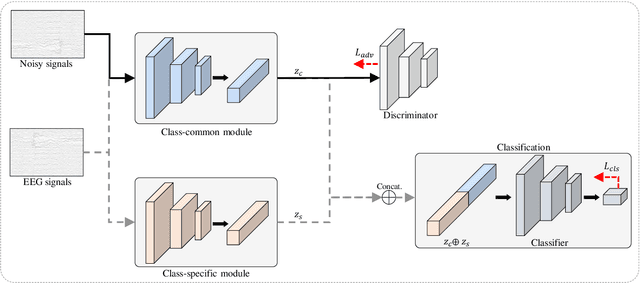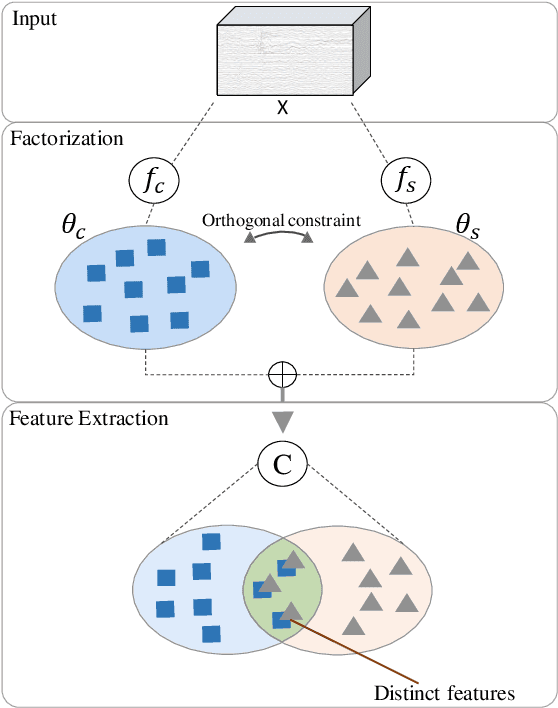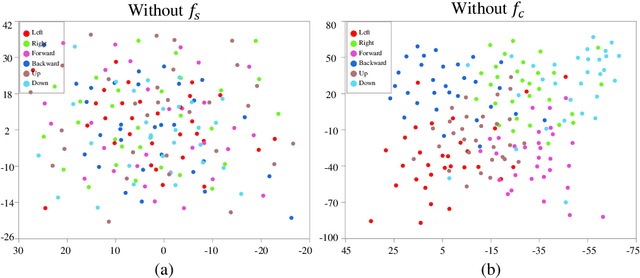Factorization Approach for Sparse Spatio-Temporal Brain-Computer Interface
Paper and Code
Jun 17, 2022



Recently, advanced technologies have unlimited potential in solving various problems with a large amount of data. However, these technologies have yet to show competitive performance in brain-computer interfaces (BCIs) which deal with brain signals. Basically, brain signals are difficult to collect in large quantities, in particular, the amount of information would be sparse in spontaneous BCIs. In addition, we conjecture that high spatial and temporal similarities between tasks increase the prediction difficulty. We define this problem as sparse condition. To solve this, a factorization approach is introduced to allow the model to obtain distinct representations from latent space. To this end, we propose two feature extractors: A class-common module is trained through adversarial learning acting as a generator; Class-specific module utilizes loss function generated from classification so that features are extracted with traditional methods. To minimize the latent space shared by the class-common and class-specific features, the model is trained under orthogonal constraint. As a result, EEG signals are factorized into two separate latent spaces. Evaluations were conducted on a single-arm motor imagery dataset. From the results, we demonstrated that factorizing the EEG signal allows the model to extract rich and decisive features under sparse condition.
 Add to Chrome
Add to Chrome Add to Firefox
Add to Firefox Add to Edge
Add to Edge